Points of Interest
Museums
Nagasaki Museum of History and Culture
-
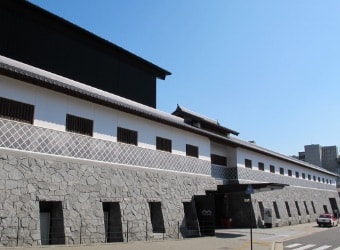
-
The Nagasaki Museum of History and Culture is one of Japan’s leading museums covering the story of international exchange from the Edo period to the modern era (Portugal, the Netherlands, China, Korea and others). Its exhibitions include precious historical materials from Nagasaki’s modern history, works of art, and ancient texts. It also shows a part of the restored Nagasaki magistrate office from the Edo-period where visitors can enjoy a short drama performance. The craft center offers hands-on classes of Nagasaki’s traditional crafts.
Address Nagasaki City, Tateyama 1-1 (Google Map) Web site http://www.nmhc.jp/global/english_leaf.pdf
Nagasaki Atomic Bomb Museum
-
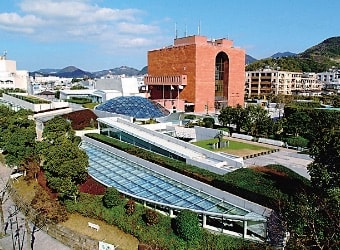
-
At 11:02 on August 9, 1945, the atomic bomb was dropped on Nagasaki. This museum tells the story of the atomic bomb survivors; it explains the events leading up to the incident, the history of the atomic bomb, nuclear weapons development, and the hope for a peaceful world free of nuclear weapons.
Address Nagasaki City, Heiwa-machi 7-8 (Google Map) Web site https://nagasakipeace.jp/index_e.html
Nagasaki Prefectural Art Museum
-
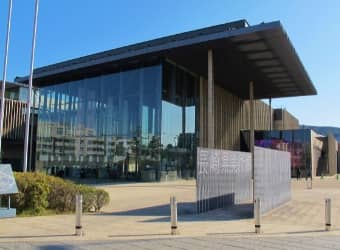
-
Nagasaki Prefectural Art Museum was designed by the world-famous Japanese architect Kengo Kuma. Divided by a canal, the building features a green rooftop garden that offers a panoramic view of Nagasaki harbour. The main gallery exhibits attractive collections, including the largest collection of Spanish artwork in the East, as well as works related to Nagasaki. Facilities include the Museum Shop, and the Cafe. The museum holds workshops, concerts and many other community events. Admission is free, excluding the temporary exhibitions.
Address Nagasaki City, Dejima-machi 2-1 (Google Map) Web site http://www.nagasaki-museum.jp/english/
Historical Museum of China
-
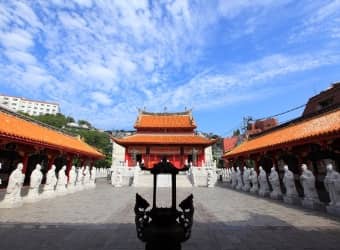
-
The Historical Museum of China showcases many Chinese national cultural treasures offered by Beijing Palace Museum. And this mausoleum dedicated to Confucian fathers, in 1893, is the only shrine of its kind to have been built by Chinese people outside of China.
Address Nagasaki City, Oura-machi 10-36 (Google Map) Web site http://nagasaki-koushibyou.com/wp-content/themes/koshibyo/pdf/translation-english.pdf
Twenty-six Martyrs Museum
-
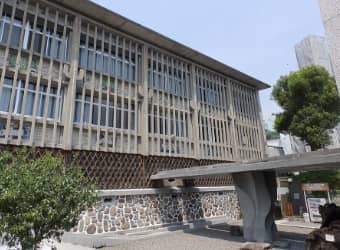
-
On February 5, 1597, six missionaries and twenty Japanese Christians were martyred on Nishizaka hill. Now a monument and a museum stand here to remember these twenty-six saints, and the tumultuous history of Christianity in Japan. A rich catalogue of artefacts tells the story of the propagation of Christianity in Japan by Xavier, the martyrdom of the 26 saints, the prayers of the hidden Christianity, and resurrection of faith in the Meiji Era.
Address Nagasaki City, Nishizaka-machi 7-8 (Google Map) Web site http://www.26martyrs.com/
Syusaku Endo Literary Museum
-
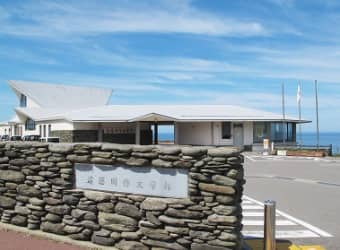
-
The Nagasaki-shi area where the Syusaku Endo Literary Museum is located in an area known as the hidden Christianity village, about a one-hour drive from Nagasaki city. The museum chronicles celebrated Japanese author Endo’s life and study, and holds a collection of over 30,000 articles - largely Christian-related - including original written manuscripts and books relating to his writings. The most notable of which, Silence, has been translated to English and turned into an English-language film (Silence, 2016).
Address Nagasaki City, Higashishitsumachi 77 (Google Map) Access(Tram) 40-50 minutes by Taxi from JR Nagasaki station Web site http://www.city.nagasaki.lg.jp/endou/
Mitsubishi Shipyard’s Museum
-
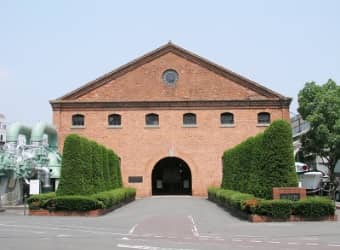
-
The red brick building of the museum was originally a factory for wooden molds for machinery of Mitsubishi, built in 1898. It is the oldest existing factory building in the Nagasaki Shipyard and it is one of the sites of “Meiji Japan’s Industrial Revolution Heritage “. It was renovated in 1985, and opened as a historical museum, introducing the historical change of Nagasaki Shipbuilding with materials telling the progress of technology such as Japan’s oldest mechanized tools and Japan’s first domestic steam turbine.
To reserve a tour of the museum please call this number 095-828-4134.
Address Nagasaki City, Akunouramachi 1-1 (Google Map)
Siebold Memorial Museum
-
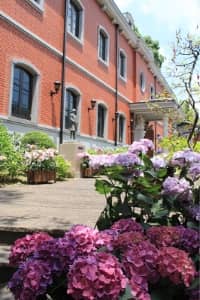
-
Philipp Franz von Siebold first came to Japan with the Dutch East India Company in 1823 as a doctor. Throughout his time in Nagasaki, he introduced Western medicine to Japanese doctors and contributed greatly to research in medicine and botany. This museum, located near the school he established in Nagasaki, is modelled after his former residence in Leiden, the Netherlands, and consists of three floors dedicated to telling the life story and contributions of the man.
Address Nagasaki City, Narutaki 2-7-40 (Google Map)
Temples & Shrines
Suwa Shrine
-
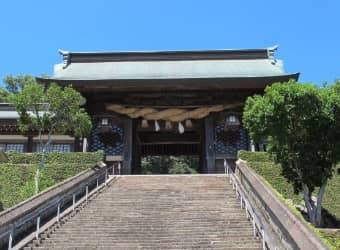
-
The origins of Nagasaki’s Suwa Shrine can be traced back to the 1500s. Originally located at present day teramachi-dori (temple street), this shrine, together with other Buddhist and Shinto relics, was destroyed by Christians. In an effort to revive the Shinto faith, Suwa Shrine was rebuilt in 1625 and relocated to its present location in 1648. The Nagasaki Kunchi Festival with over 380 years of history takes place here from October 7-9 annually and is one of the largest festivals in Japan.
Address 18-15 Kaminishiyamamachi (Google Map) Web site https://www.osuwasan.jp/page0200.html
Fuchi Shrine
-
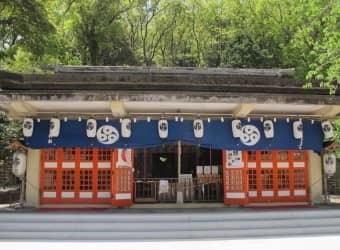
-
Fuchi Shrine is a peaceful scenic spot located at the foot of Mt Inasa in the western part of the city. It was burned down under Christian rule and then rebuilt in 1634. In 1945, the main hall collapsed by the atomic bomb and in 1960 was rebuilt to its present building. Adjacent to the shrine, is the ropeway station for Mt. Inasa.
Address 8-1 Fuchimachi (Google Map)
Sofukuji Temple
-
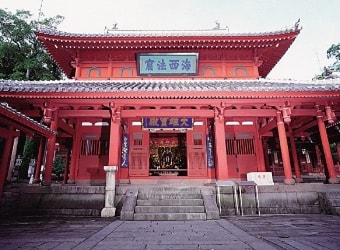
-
Sofukuji was established in 1629 by Chinese residents from Fujian Province. It is one of the best examples of Ming Dynasty temple architecture remaining anywhere, even within China. The Inner Gate, Daiippomon, and the main Buddha Hall, Daiohoden, were both made in Ningbo, China, disassembled, shipped to Nagasaki and reassembled. They are both national Treasures. The Buddha hall is claimed to be the oldest building in Nagasaki. Vestiges of Ming Dynasty China can also be found in the temple’s Buddhist statues and altar equipment which were crafted by master craftsmen from China. This temple is truly a treasure trove of historical relics.
Sofukuji, together with Kofukuji, Shofukuji and Fukusaiji comprise the “four fortune temples of Nagasaki” (長崎四福寺).Address 7-5 Kajiyamachi, Nagasaki City, Nagasaki 850-0831 (Google Map)
Kofukuji Temple
-
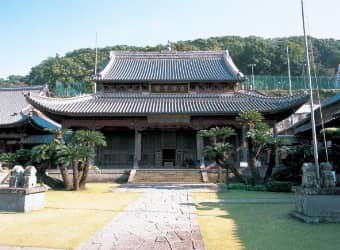
-
Kofukuji is the oldest Chinese Obaku Zen temple in Japan and is an Important Cultural Property. It was built in 1620 to pray for the safety of sea voyages between China and Nagasaki. The temple stands out with its impressive red gate. Many important Zen masters have stayed at this temple, including the founder of Obaku Zen Buddhism Ingen, Mokusu Nyojo who built the nearby spectacles bridge, and Itsunen who introduced a new style of Chinese painting to Japan. Visitors can taste Buddhist Vegetarian cuisine here, or enjoy Japanese green tea and sweets in the tea house next to the garden.
Address 4-32 Teramachi (Google Map) Web site http://visit-nagasaki.com/spots/detail/707
Shofukuji Temple
-
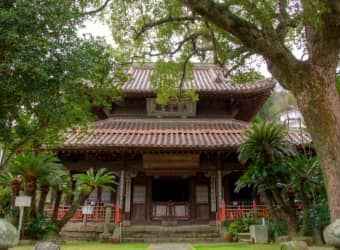
-
Shofukuji was established in 1677 to honour a highly regarded priest Tesshindohan of Nagasaki. The temple stands as it has since its 1715 reconstruction, and is known for its temple bell built in 1718. Many of the temple’s relics have been designated city or prefectural cultural assets.
Shofukuji, together with Kofukuji, Sofukuji and Fukusaiji comprise the “four fortune temples of Nagasaki” (長崎四福寺).Address 3 Tamazonomachi (Google Map)
Confucian Shrine
-
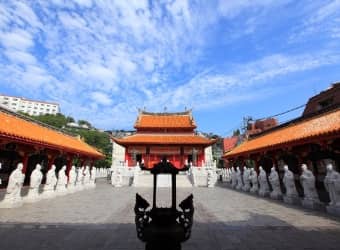
-
The Confucius Shrine (koshi-byo) in Nagasaki was built in 1893 by Chinese residents of the city with financial support from the Qing government and is said to be the only Confucius shrine outside China built by Chinese labor. The colorful shrine, built in Chinese style, has 72 statues in its grounds, the followers of the great sage. The land on which is shrine stands belongs to China and is administered by the Chinese embassy in Tokyo. The original shrine housed a primary school for Chinese residents of Nagasaki. The Historical Museum of China is also located here and showcases many Chinese national cultural treasures.
Address 10-36 Ōuramachi (Google Map) Web site http://nagasaki-koushibyou.com/wp-content/themes/koshibyo/pdf/translation-english.pdf
Kotaiji Temple
-
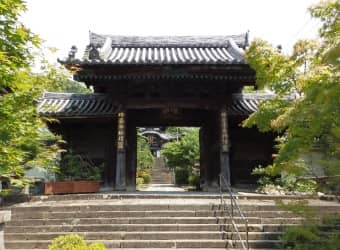
-
In the 17th century, the flourishing of Christianity in Nagasaki made it hard for other religions to prosper. In the hope of bettering the chances of Buddhism, in 1608, Kio Ryukaku founded the temple Kotaiji. It has various points of interest, such as the Sanmon gate and Daibutuden. There are also graves of famous Japanese people from the past. As an active Zen temple of the Soto sect, foreigners are welcome to join the zazen meditation practice on Saturday evenings.
Address 1-1Tera-machi Nagasaki (Google Map) Web site http://kotaiji.net/
Churches & Cemeteries
Oura Cathedral
-
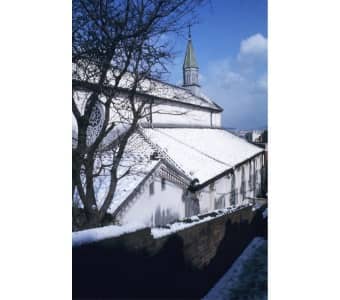
-
Oura Cathedral is the oldest surviving wooden church of gothic architecture in Japan. It was built in 1864 by the French missionary, Father Petitjean. The church was dedicated to the 26 martyrs who had been executed on Nishizaka Hill 200 years before. It has been designated as a national treasure. One important story of this church is the “Discovery of the Flock”where hidden Christians came to the cathedral revealed their faith. The Pope at the time was moved by how the Christian faith had survived centuries of harsh persecution, and declared it to be the “Miracle in the East”. Pope John Paul II visited this site in 1981.
Address 5-3 Minamiyamatemachi (Google Map) Web site http://kirishitan.jp/en
Urakami Cathedral
-
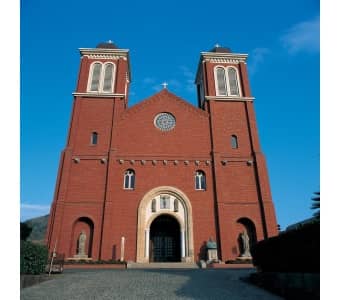
-
Urakami Cathedral is located 500 meters north of the hypocenter. It was once renowned for being the largest Roman Catholic church in the East but was completely demolished by the nuclear blast. Now you can see the headless statues of the saints, the bell tower that was blown off by the atomic bomb and a wooden figure of the Virgin Mary which miraculously survived the heat of the nuclear blast.
Address 1 Motoomachi (Google Map) Web site https://travel.at-nagasaki.jp/en/what-to-see/31/
The Twenty-Six Martyrs Hill
-
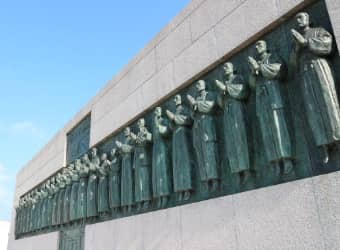
-
On February 5, 1597, twenty-six Catholics were executed here under the orders of Toyotomi Hideyoshi, marking the beginning of a two century long period of harsh Christian persecution in Japan. Today, this spot on Nishizaka Hill has been designated a Japanese National Sanctuary. In 1950 the papacy certified this place as an official Catholic pilgrimage site. Pope St. John Paul II visited this site on February 26, 1981 as a pilgrim for the martyrs.
Address 4-21 Nishizakamachi (Google Map)
Nakamachi Catholic Church
-
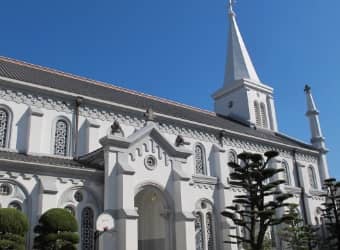
-
Nakamachi Church was built using funds donated by a French woman in 1896, but it was destroyed by the atomic bomb in 1945. Five years later in 1951, it was rebuilt by hand using the remaining tower and outer wall as a guide. In 1987, a memorial was installed to commemorate the 15 martyrs who were finally canonized 125 years since the 26 saints. One of the saints is Lorenzo Lewis who became the first saint in the Philippines.
Address Nakamachi, 1−13 (Google Map)
Shitsu Church
-
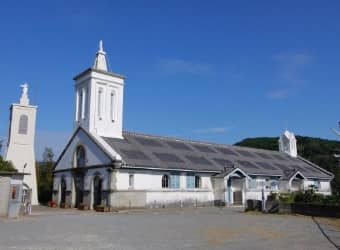
-
The Shitsu Village in Sotome is a settlement where hidden Christians secretly practiced their faith, performing baptisms, worshipping sacred images, studying the doctrines, and observing Christian events. The Hollywood movie "Silence" (directed by Martin Scorsese) was set here. In 1882, Father de Rotz who was a missionary from Paris built "Azu Church Hall" on a hill overlooking the village. A statue of the Virgin Mary that was ordered from France still stands on the bell tower.
Shitsu Church : Reservation required.
https://kyoukaigun.jp/en/Address Nagasaki City, 2633 Nishishitsumachi (Google Map) Web site http://kirishitan.jp/en
Inasa International Cemetery
-
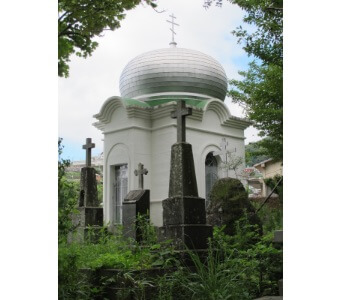
-
Of the three international cemeteries in the city the Inasa International Cemetery is the oldest and largest. It is unusual among international cemeteries as it has a history in the precincts of Goshinji and was protected by the priests of the temple. Many foreigners are buried here, including Chinese, Dutch, Russian. It holds Japans oldest existing Chinese grave (1627), the oldest Westerners grave in Japan (1778), and the largest Russian tomb in Japan.
Address 8 Akebonomachi (Google Map)
Sakamoto International Cemetery
-
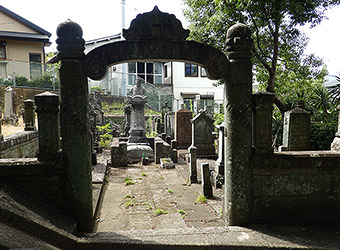
-
Opened in 1888 as an alternative to the Oura International Cemetery, it is the newest foreign cemetery in Nagasaki, managed by Nagasaki City. 325 people from 14 countries including Japan are buried here, it is the largest international cemetery in Nagasaki. British, American, Jewish, French, Vietnamese people are divided and buried in their respective areas.
Address 1-2 Sakamoto (Google Map)
Mountains
Mt. Inasa
-
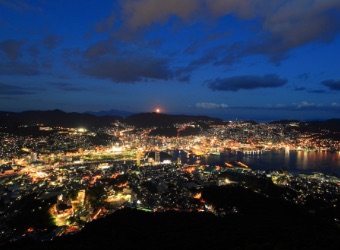
-
Mt Inasa stands at 333 m high northwest of the city area. The 4-storey observation deck at the summit overlooks the dynamic and peaceful night scenery of urban areas lights and houses that crawl up the hills around Nagasaki Harbor. Nagasaki was chosen as one of the world’s three greatest night views alongside Hong Kong and Monaco at the World Night View Summit in 2012. The best way to enjoy this view is to take the glass-panelled gondola ropeway up to Mt. Inasa.
Address 364 Inasamachi (Google Map) Web site https://travel.at-nagasaki.jp/en/s/feature/nightscape/inasa/
Mt. Nabekanmuri
-
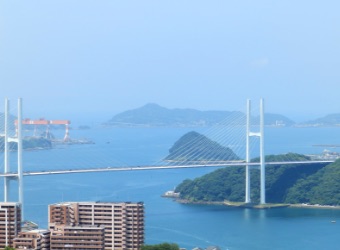
-
Mt. Nabekanmuri stands at 169m, offering a panoramic view of Nagasaki City. In particular, Nagasaki Port and the International Cruise Ship Terminal can clearly be seen from the spacious observation deck. Visitors will also be able to spot 5 components of the World Heritage Site, “Sites of Japan’s Meiji Industrial Revolution: Iron & Steel, Shipbuilding and Coal Mining” on a clear day. This includes Glover House & Office and Hashima (Gunkanjima, Battleship Island). The observation deck is wheelchair friendly but a car is required to get to the peak of the mountain.
Address Izumo, 2 Chome−144−1 (Google Map) Access(Tram) 20 minutes by taxi from Nagasaki Station
10 minutes on foot from Glover Garden Exit 2.
Mt. Kazagashira
-
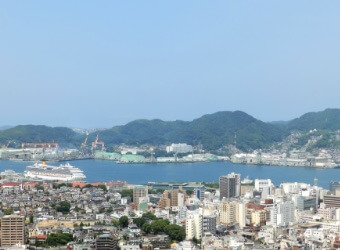
-
Standing at 151.9m tall, Mt Kazagashira offers a fantastic view of Nagasaki City.
From the look-out in the middle of Kazagashira Park, you can see out to Megami Ohashi (Venus Bridge) and it also offers a great view of the city against the mountains, that Nagasaki is famous for. You can also find a statue of Sakamoto Ryoma standing proud next to the look-out and the park also has approx. 350 sakura cherry blossom trees (late March~early April) and is a good spot for seeing hydrangeas (May to July) as well.Address 3Chome-510-6 Irabayashi (Google Map) Access(Tram) 5 minutes walk from “Kazagashira” Bus stop
Islands & Harbor
Gunkanjima(Battleship Island)
-
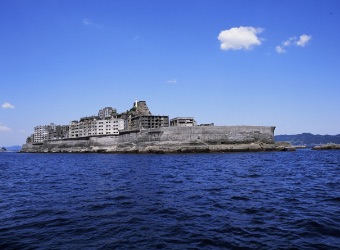
-
In 1974 petroleum started being used as an energy source instead of coal, and Hashima’s coal mining era came to an end leaving the island completely deserted. Hashima is also known by its nickname “Gunkanjima” (Battleship Island) due to its unique silhouette. After more than 30 years since then, in 2009 the tourist facilities were upgraded and landing tours became possible. This island has been added to the List of UNESCO World Heritage Sites for its historical value based on its industrial heritage in 2015. It has also been getting world-wide attention as it was the model for the “Dead City” in the James Bond movie “Skyfall” (2013). “Attack on Titan” (2015) was also filmed on this island.
Address Takashima, Nagasaki city, Nagasaki (Google Map)
Takashima Island
-
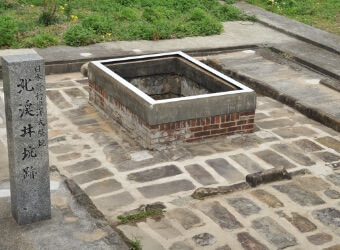
-
Coal mining in Takashima started during the 19th century, with a joint venture between the Saga Domain and Glover & Co. Using the latest technology and mining machinery from Europe Japans first steam powered coal excavation was installed here. The Hokkei Pit, which was around 43 meters deep, produced around 300 tons of coal daily. Takashima coal mine was closed in 1986, and the area has become well known as a resort island with a popular island fishing park, artificial beach, and island therapy.
Address Takashima-machi, Nagasaki city, Nagasaki (Google Map)
Iojima Island
-
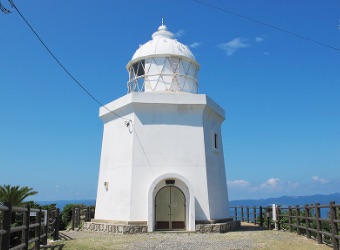
-
Iojima is a peaceful resort island. You can forget the daily hustle and bustle of the city just a twenty-minute ferry ride from Nagasaki city. The sandy beaches, bright blue ocean, European style resort houses and church bell chimes are just the start. You can also enjoy the natural hot springs and fresh local food, the blessings of the island, as well as various historical sites.
Address Iojimamachi, Nagasaki, Nagasaki Prefecture 851-1201 (Google Map)
Ikeshima Island
-
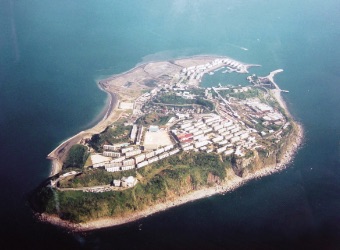
-
Like the famous Gunkanjima (Battleship Island), Ikeshima flourished as coal mining island. The island’s population, once over 8000, has now dwindled down to approx. 150 leaving entire building blocks abandoned to be reclaimed by nature. The coal mine was finally closed in 2001, making it the last coal mining island in Kyushu. You can still go to Ikeshima and (unlike Battleship Island) walk through the streets of the abandoned town and view scenes of decaying and collapsing machinery, buildings and infrastructure against overgrown tall grass and some of the former housing and apartments entirely covered in vines.
Address Ikeshima Island, Nagasaki Prefecture (Google Map)
Megami Ohashi
-
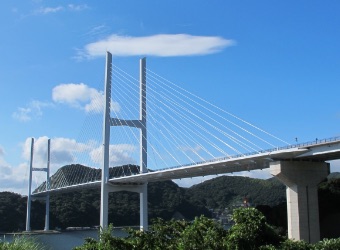
-
This beautiful suspension bridge crosses Nagasaki harbor connecting the southern and western parts of Nagasaki City. At a height of 65 m above the sea this is the highest bridge in the whole country allowing large passenger ships to pass through. The bridge has been said to look like “Venus wings” as it is illuminated every night.
It is also possible to cross the bridge on foot.Address Kibachimachi - Tomachi (Google Map) Access 20 minutes by car from Nagasaki JR Station.
Nagasaki Dejima Wharf
-
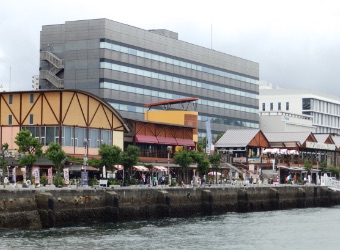
-
It opened in 2000 as a landmark of the new Bay Area. In complex facilities such as cafes, restaurants and restaurants, there are also many Japanese people, as well as foreign relatives relaxing at the seats where foreign tourists lined up on the deck. This is the place where Nagasaki Shanghai route was opened for 20 years from 1923.
Address 1-1 Dejimamachi (Google Map)
Nagasaki Port Terminal(Big Pit)
-
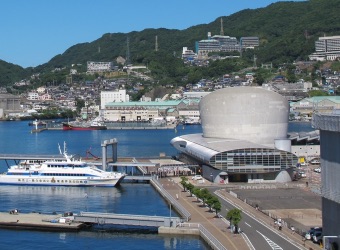
-
The Nagasaki Port Terminal is a 15 minute walk from the Nagasaki JR station. You can catch regular ferries to the information islands such as Goto, Kamigoto, Takashima, Iojima and other destinations. There are also short tourism cruises circling the famous battleship island. The information of each company and time and fee are as follows.
Address 17-3 Motofunamachi (Google Map) Web site http://nagasaki-terminal.jp/english/
Matsugae International Port Terminal
-
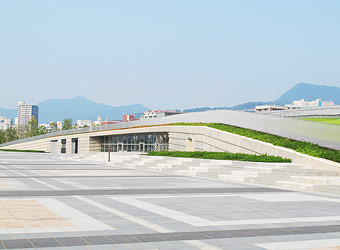
-
Matsugae international cruise terminal was completed in 2010. It has a modern design with a green rooftop blending in with the hilly landscape of the city. The terminal can dock huge international cruise liners and is conveniently located close to Glover Garden and Nabekanmuri look out point.
Address 7-16 Matsugaemachi (Google Map)
Downtown
Shinchi China Town
-
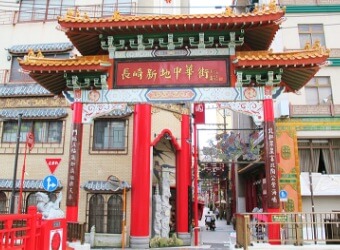
-
Nagasaki Chinatown is one of the three largest Chinatowns in Japan, alongside those in Yokohama and Kobe. After 1859, with the opening of Japan to foreign countries, the Chinese residents in Nagasaki transferred to Shinchi Town where the current Chinatown is located. There are about 40 restaurants serving Champon and Saraudon, the famous Nagasaki Chinese cuisine, as well as souvenir shops. This area is now a popular sightseeing spot for original Nagasaki-style Chinese food and the Nagasaki Lantern Festival, the largest Chinese New Year celebration in Japan.
Address Shinchimachi (Google Map)
Old Chinese Resic
-
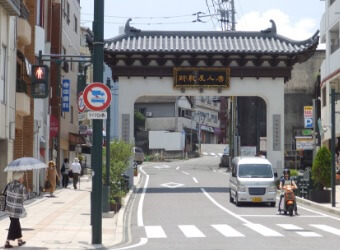
-
During the Edo period, as a countermeasure for illegal trade, the Edo shogunate maintained the residence district to accommodate Chinese traders. Currently, none of the original residences are left, but Togamido, Kannondo, Tenkado, Fujian hall and four halls are open for exhibit.
Address Kannaimachi (Google Map)
Spectacles Bridge
-
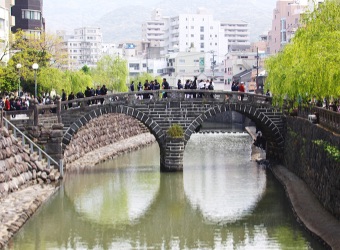
-
The Nakashima River runs through a series of picturesque 17th-century stone bridges. Best-known is the double-arched Megane-bashi, or Spectacles Bridge, so called because the reflection of the arches in the water looks like a pair of eyeglasses. It was originally built in 1634, and was Japan’s oldest stone bridge. Unfortunately it was washed away by floodwaters in the 1982 disaster which killed 299 people, but was later restored using the recovered stones. Try spotting a heart-shaped stone near to the bridge and make a wish for eternal love.
Address Uonomachi (Google Map)
Hamano Machi Shopping Arcade
-
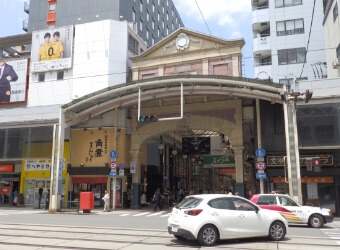
-
Hamanomachi shopping arcade is located in Nagasaki’s downtown area. The sheltered street is about 360 m long with about 80 stores. There are lots of cafes that are perfect for a break and you can stroll at your own pace, and walk through the arcades and alleys you will find new discoveries.
Address Hamamachi (Google Map)
Shianbashi & Maruyama
-
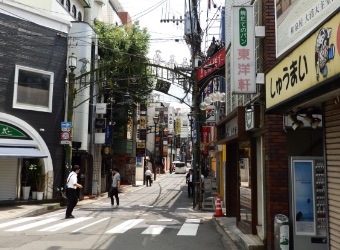
-
Experience Nagasaki’s night life at Shianbashi and Doza. Not only are the streets filled with delicious finds, it is also an area steeped in history, and relics from the past can still be spotted along the streets.
The Maruyama Hana Festvial brings to life the bygone days of Maruyama, formerly one of the three largest geisha districts (hanamachi) in Japan, with traditional dances and a procession of courtesans through the streets. The festival also features an onnamikoshi, a portable shrine carried strictly by women only.Address Shianbashi : Aburayamachi (Google Map), Motoshikkuimachi (Google Map)
Maruyamamachi (Google Map)
Suburbs
Sotome Village
-
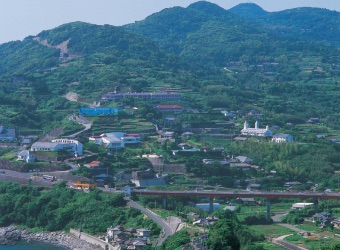
-
The Shitsu Village in Sotome is a settlement where hidden Christians secretly practiced their faith, performing baptisms, worshipping sacred images, studying the doctrines, and observing Christian events. The Hollywood movie "Silence" (directed by Martin Scorsese) was set here. In 1882, Father de Rotz who was a missionary from Paris built "Azu Church Hall" on a hill overlooking the village. A statue of the Virgin Mary that was ordered from France still stands on the bell tower.
Shitsu Church : Reservation required.
https://kyoukaigun.jp/en/Address Nagasaki City, 2633 Nishishitsumachi (Google Map) Access About 1hour 10mins by Nagasaki Bus Web site http://kirishitan.jp/en
Nomozaki
-
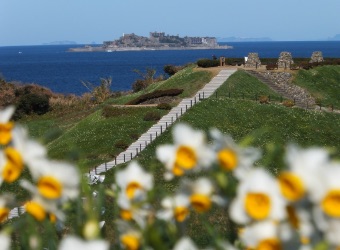
-
Nomozaki is located on the southern tip of Nagasaki Peninsula at the southeast corner of Kyushu mainland, surrounded by the sea. With a mild climate, you can enjoy the beautiful beach, blue sea, and interesting rock formations, which are said to be the oldest in Kyushu. The “Nomozaki Daffodil Festival” is held here every January.
Address Nomomachi (Google Map)